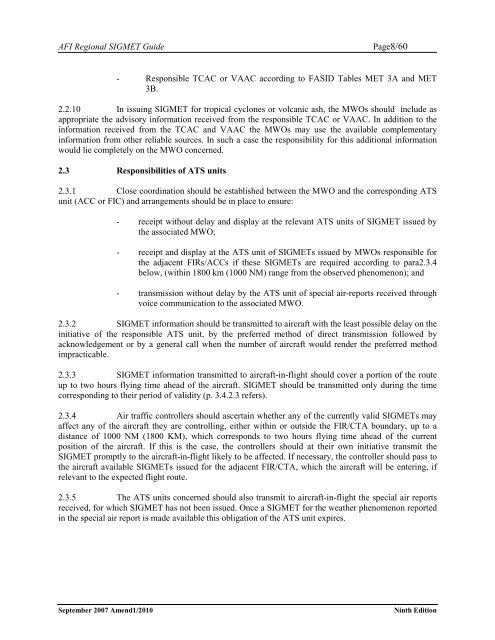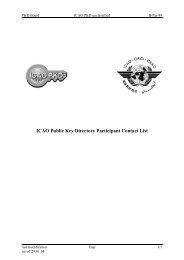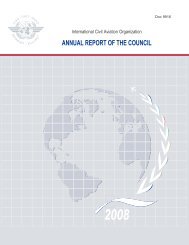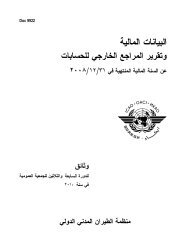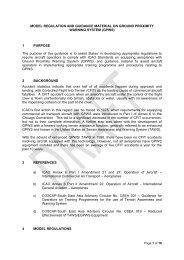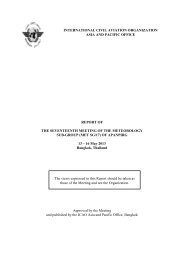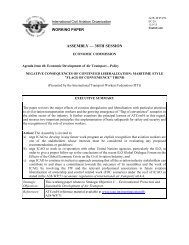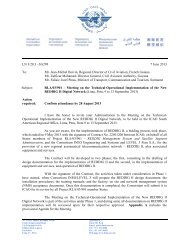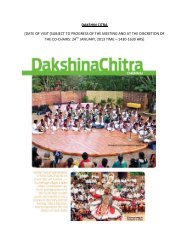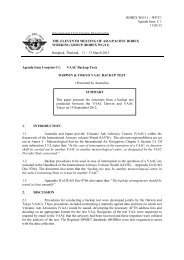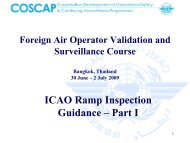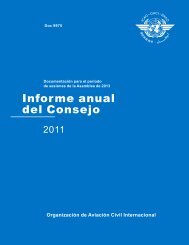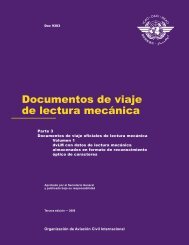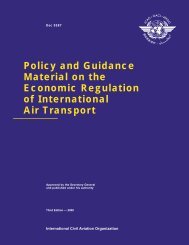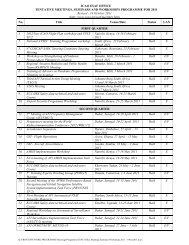afi met bulletins exchange (ambex) handbook - ICAO
afi met bulletins exchange (ambex) handbook - ICAO
afi met bulletins exchange (ambex) handbook - ICAO
Create successful ePaper yourself
Turn your PDF publications into a flip-book with our unique Google optimized e-Paper software.
AFI Regional SIGMET Guide Page8/60<br />
- Responsible TCAC or VAAC according to FASID Tables MET 3A and MET<br />
3B.<br />
2.2.10 In issuing SIGMET for tropical cyclones or volcanic ash, the MWOs should include as<br />
appropriate the advisory information received from the responsible TCAC or VAAC. In addition to the<br />
information received from the TCAC and VAAC the MWOs may use the available complementary<br />
information from other reliable sources. In such a case the responsibility for this additional information<br />
would lie completely on the MWO concerned.<br />
2.3 Responsibilities of ATS units<br />
2.3.1 Close coordination should be established between the MWO and the corresponding ATS<br />
unit (ACC or FIC) and arrangements should be in place to ensure:<br />
- receipt without delay and display at the relevant ATS units of SIGMET issued by<br />
the associated MWO;<br />
- receipt and display at the ATS unit of SIGMETs issued by MWOs responsible for<br />
the adjacent FIRs/ACCs if these SIGMETs are required according to para2.3.4<br />
below, (within 1800 km (1000 NM) range from the observed phenomenon); and<br />
- transmission without delay by the ATS unit of special air-reports received through<br />
voice communication to the associated MWO.<br />
2.3.2 SIGMET information should be transmitted to aircraft with the least possible delay on the<br />
initiative of the responsible ATS unit, by the preferred <strong>met</strong>hod of direct transmission followed by<br />
acknowledgement or by a general call when the number of aircraft would render the preferred <strong>met</strong>hod<br />
impracticable.<br />
2.3.3 SIGMET information transmitted to aircraft-in-flight should cover a portion of the route<br />
up to two hours flying time ahead of the aircraft. SIGMET should be transmitted only during the time<br />
corresponding to their period of validity (p. 3.4.2.3 refers).<br />
2.3.4 Air traffic controllers should ascertain whether any of the currently valid SIGMETs may<br />
affect any of the aircraft they are controlling, either within or outside the FIR/CTA boundary, up to a<br />
distance of 1000 NM (1800 KM), which corresponds to two hours flying time ahead of the current<br />
position of the aircraft. If this is the case, the controllers should at their own initiative transmit the<br />
SIGMET promptly to the aircraft-in-flight likely to be affected. If necessary, the controller should pass to<br />
the aircraft available SIGMETs issued for the adjacent FIR/CTA, which the aircraft will be entering, if<br />
relevant to the expected flight route.<br />
2.3.5 The ATS units concerned should also transmit to aircraft-in-flight the special air reports<br />
received, for which SIGMET has not been issued. Once a SIGMET for the weather phenomenon reported<br />
in the special air report is made available this obligation of the ATS unit expires.<br />
September 2007 Amend1/2010 Ninth Edition


